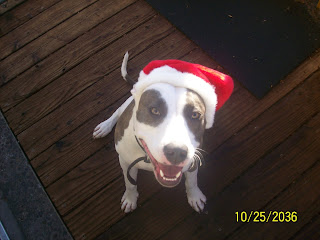

Sunday, December 27, 2009
With Rain come Dangerous Mushrooms
Can you help to spread the word that the Amanita phalloides, the death cap mushroom, has come out in full force since the rains started. We had one death at Lake 2 weekends ago, and PETS emergency clinic in Berkeley called on Friday and said they have had 3 deaths in 6 days - all from the Oakland area.
The mushrooms have a sweet odor (like honey) and are attractive to some dogs (whose owners report they actually seek them out to eat them). They are really non descript little white mushrooms.
The toxic effects appear about 6-36 hours after the mushrooms are eaten, and once signs are seen the toxicity is poorly responsive to treatment (we try a lot of things to support the animal, but if enough mushrooms were eaten it will be fatal despite the treatment).
If someone suspects their dog may have eaten a mushroom, the best treatment is to take the dog immediately to a vet or emergency clinic and have them induce vomiting and give activated charcoal. The mushroom toxin is absorbed fairly rapidly, but the damage to the liver can take hours before it is clinically apparent. Don't waste time trying to figure out if the mushroom is toxic as speed in removing the mushroom from the digestive system is the most important thing in my experience.
Here is a link with some pictures
http://en.wikipedia.org/wiki/Amanita_phalloides
Metro Dog Thanks Lake Veterinary Hospital for this Bulletin
Thursday, December 10, 2009
Shake it Up! The Dangers of Being Too Consistent with Your Dog
Shake it Up! The Dangers of Being Too Consistent with Your Dog
Have you been told how important it is to be consistent with your new dog? To feed and walk them at similar times every day? This is popular advice and it is excellent for a new dog that you have adopted that needs to learn that he or she is safe in it's new home, but following a predictable schedule with your dog can actually contribute to increasing anxiety rather than the reverse!
For most people once their dog is comfortable in the home (which generally takes a few weeks) it is important to vary the dog's schedule including feeding times, exercise times and alone time. You may have already learned how important this is by trying to change something in your dog's life that you have inadvertently been too predictable about. Say for example needing to fast your dog for a meal for a veterinary procedure or test. Your dog may pace and whine and paw at you, wondering "why oh why" is the food not coming on schedule!? Which brings me to the importance of varying feeding times and even what you feed (which is another topic). I even recommend skipping a meal on your dog every so often (say, once per month). It is especially good to do when your dog has a bit of an upset tummy.
It's okay to skip a day of physical exercise too (maybe once per week). You may want to give more chewies, food-dispensing toys or spend time training tricks that day if your dog is high energy.
It is also important to make sure your dog experiences different environments, people and dogs so that he continues to feel safe when he visits them. Generally, people know to do lots of socialization with puppies but then we forget about our adult dogs. If we don't keep up with socialization our adult dogs will eventually become less comfortable in these situations, so it is a good idea to get off the beaten path as much as you can. Remember to take it slow with a dog who is worried and use lots of positive reinforcement for good behavior.
What about training? Professional trainers know how important it is to avoid being predictable in training. If you always feed your dog a dry biscuit when he comes when you call, he may decide that running free at park trumps a dry biscuit and decide not to come to you, but if he never knows when you might spring that nice juicy piece of hotdog on him he may be more likely to come. Similarly, if you always call your dog to you after asking him to "stay", your dog is not likely to anticipate you calling him and be less likely to stay put. So you can vary that with coming back to him to give him his treat.
Does your dog always sleep in your bed? If so you may want to get your dog used to sleeping in another spot just in case you do not want him or her there at some point. Keeping your dog flexible about sleeping spots will help to prevent anxiety when you want to change the arrangement. Can your dog sleep in a crate if needed? This is a great skill for a dog to have since he or she may need it one day for veterinary care or travel. Click here to brush up on your crate training skills.
How about your schedule? Are you away and home for the same amount of time each day? Perhaps your dog gets anxious if you are late coming home? Try to add some variety to that as well if possible.
The idea is to add enough variety into the schedule so the dog things "oh, this is no big deal" when things don't go as they usually do. If your dog is getting very upset about adding variety into his or her schedule that means you will need to take baby steps in the changes you make.
Our little dog Ollie loves to spend every waking moment with us and since I work from home he can almost do that. So for him, it is important to make sure he has enough practice being alone since there will be times (say, when we are on vacation or go to a special event) that he will have to be on his own. When I noticed Ollie was becoming "overbonded" and getting anxious when alone, I decided no more constant lap time, some time gated away from us and sleeping in a different room from us was in order. I do my best to make it fun and easy for him by giving him yummy chew toys that he doesn't get at other times.
If your dog gets extremely anxious when you try to vary his schedule in this way to the point you feel "locked - in" to the dog's schedule and unable to alter it due to your life's needs, you may want to contact a positive trainer or a veterinary behaviorist for help.










 By
By 
